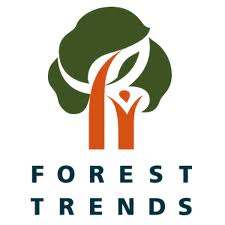Negotiating for Nature’s Services (Forest Trends)
A Primer for Sellers of Ecosystem Services on Identifying & Approaching Prospective Private Sector Buyers / Forest Trends
 This basis of this report is that “over 60% of ecosystem functions around the world are being degraded faster than they can recover” and so “for ecosystem services to be maintained, stewardship needs to become more profitable than alternative land uses”.
This basis of this report is that “over 60% of ecosystem functions around the world are being degraded faster than they can recover” and so “for ecosystem services to be maintained, stewardship needs to become more profitable than alternative land uses”.
Read report
Forest Trends is an international NGO working on forest issues based in the United States with a focus on sustainable forest management, markets and livelihoods.
This primer is aimed at supporting rural communities to make deals with the private sector to preserve ecosystem services. These could be in emerging markets based on capture of carbon dioxide, water or biodiversity offsetting.
The report explains that Payments for Ecosystem Services (PES) are increasing in number but have not been scaled up yet because the private sector still has doubts around why and what they would be paying for.
There is detailed information for sellers about each stage they need to go through to make successful deals with private companies. The stages are the same as they would be for selling any other product but in the case of ecosystem services this is more complicated because currently buyers have doubts about what they are paying for. [see Box 10: Building the Business Case for Ecosystem Service Payments, page 21]
Step 1: Identify the ecosystem services being sold and why are they valuable to a potential buyer
Step 2: Identifying prospective buyers and establishing relationships
Step 3: Identifying the buyer’s needs and interest in paying for ecosystem services.
Step 4: Draft a sales proposal
Step 5: Structure the agreement and finalize the deal
The seller first has to identify what ecosystem services exist on lands to which they have clear resource use rights or ownership.
To convince a buyer the seller can use existing scientific and quantitative tools for measuring the value of ecosystem services. This provides the “proof” to a private company about the ecosystem services they are paying for.
The seller can also communicate the business opportunities of paying for ecosystem services and business risks e.g. if a company depends on certain ecosystem services to make their products.
 Forest Trends suggest the following questions to work out a company’s dependence on ecosystem services:
Forest Trends suggest the following questions to work out a company’s dependence on ecosystem services:
- What raw materials are used by a specific business?
- What companies rely on what infrastructure? Is this infrastructure vulnerable to storm damage or other environmental threats?
- Are there other ways that these businesses might rely on ecosystem services?
- What can the businesses do to eliminate/minimize the threats to the ecosystems they rely on?
Ecosystem service buyers could be:
- a single company,
- a group of companies (such as ecotourism operators)
- a participant within a larger cap-and-trade system of buyers, that requires purchase of a certain amount of services to offset damages
Buyers will probably come from these industry sectors:
- Oil & Gas
- Utilities (such as energy companies such as those operating dams or wastewater treatment/water facilities)
- Mining
- Agriculture
- Food & Beverage
- Transportation
- Forestry/Pulp & Paper
- Retailers
- Municipalities & Governments
A list of brokers to sell CO2 credits (greenhouse gas emissions) is listed on page 46. They include: ECOTRUST, the Edinburgh Centre for Carbon Management, NatSource, Chicago Climate Exchange, Climate Care, EcoSecurities, Evolution Markets LLC and CO2e.
Options for payment types:
Direct financial payments e.g. compensation for opportunity costs or loss of livelihood incurred by ecosystem service protection, such as the conversion of managed farmland to natural forest.
Financial support for specific community goals e.g. building of a school or clinic to remunerate for ecosystem services
In-kind payments e.g. such as the beehive-for-conservation payment transaction that Fundación Natura is making in Bolivia
Recognition of rights e.g. increased land rights and increased participation in decision-making processes.
 How is a price set for ecosystem services?
How is a price set for ecosystem services?
Key observations from the authors include:
“Ultimately, market demand drives the price of ecosystem services. And therefore the take home message is that theoretical economic valuation does not equal market pricing”.
“In some cases (and these may be rare), valuation studies can help generate demand for a service, but in no case should these studies be confused with the actual price of an ecosystem service.”
“Buyers will tend to seek the lowest-cost suppliers of services. In most current ecosystem services markets, potential supply far outstrips market demand, suggesting that prices will typically be fairly low.”
“The reality is that the price will be what the buyer is willing to pay”.
According to the report there are several techniques that can be used together to place a financial value on ecosystem services. These include:
- Asking people how much they are willing to pay for direct and indirect economic benefits.
- Calculating the direct financial benefits to different stakeholders.
- Use existing market or transaction prices as a baseline
Read report
————————————
This summary was prepared by Why Green Economy?. The views expressed have been paraphrased. See the original source for more information.

Leave a Reply